GuitarPlayer Verdict
This represents a new pinnacle for Martin’s Grand Performance, standing head and shoulders above previous incarnations with its midrange jangle and top-end sparkle. A worthy Editors' Pick Award winner!
Pros
- +
Well-crafted with sonic ingenuity and sustainability for exceptional playability and balanced modern acoustic/electric tones
Cons
- -
Price reflects significant R&D and sustainability investment. Pickup placement means it’s not conducive to adding a soundhole pickup
You can trust Guitar Player.
If it seems like the big acoustic guitar manufacturers are diversifying product lines to break stereotypes and compete on multiple fronts, that’s because they are. It’s been more than a minute since one could concisely say a Martin is like this, a Taylor is like that, and a Gibson is like so.
Historical lines continue to blur as Martin makes another new wave outside of its traditional pond with the GPCE Inception Maple.
The guitar isn’t as radical as Martin’s SC, but it is another major move toward the high-performance acoustic-electric market, which historically wasn’t a big part of the company’s bag. Shoot, a cutaway used to be considered outrageous.
The introduction of the cavernously cutaway SC in 2020 and its subsequent popularity ushered in a new era for America’s oldest acoustic shop, and while some features came from the Modern Deluxe line, the body was actually a uniquely stretched-out take on the Grand Performance, which is what the “GP” represents in GPCE. “CE” means a cutaway with onboard electronics.
On its surface, the GPCE Inception Maple is a prototypical Grand Performance, which is like an acoustic version of a Les Paul shape with a modern profile neck that’s 14 frets to a body sized between a dreadnought and an OM.
However, the Inception Maple offers premium woods with a welcome sustainability factor and a lot of modern mechanics happening under the hood. The American-made Inception is crafted with an FSC-certified European spruce top.
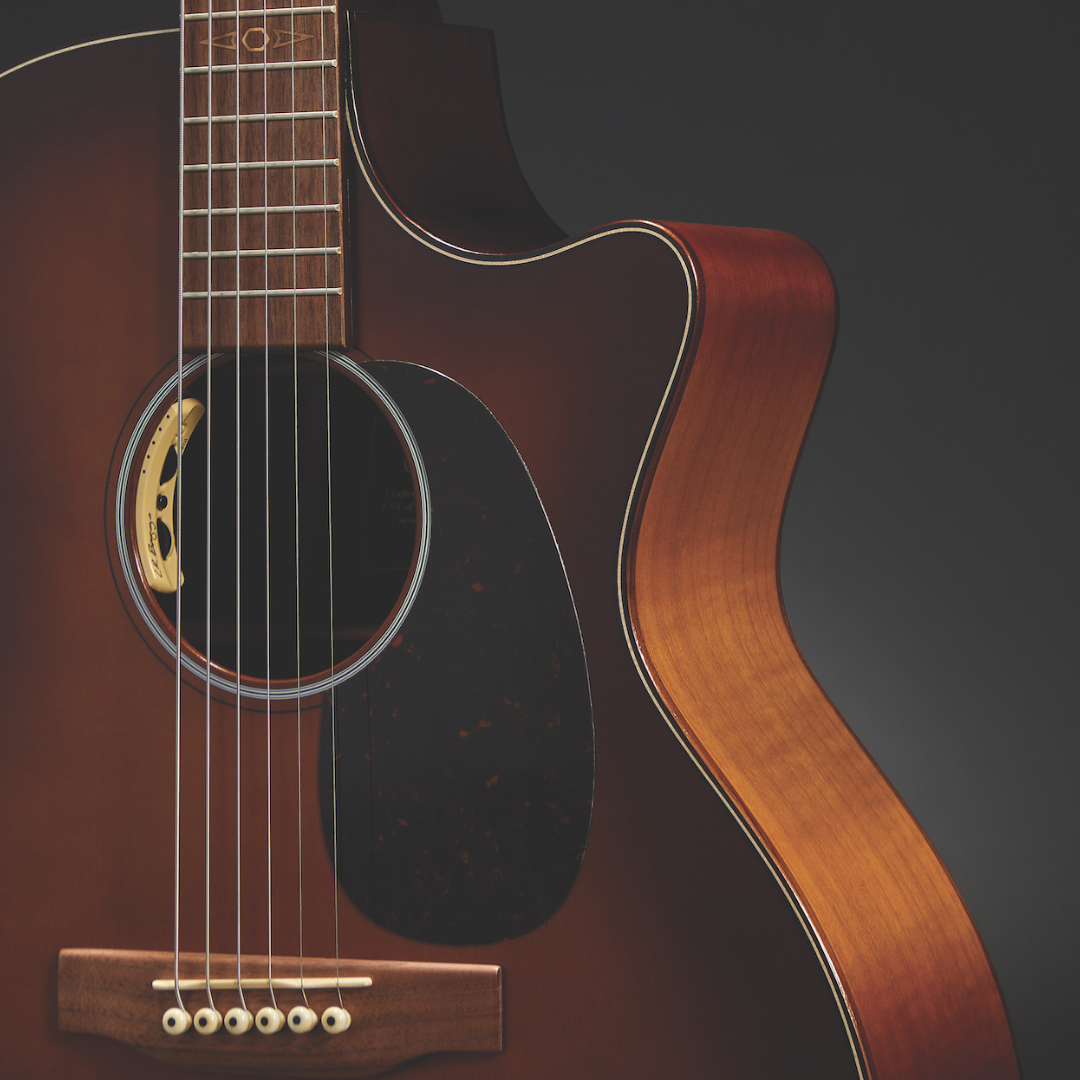
Forestry Stewardship Council certification means a product is made from responsibly sourced woods and ensures benefits for the forest and its local people. Domestic maple and black walnut constitute its three-piece back and other elements.
All the latest guitar news, interviews, lessons, reviews, deals and more, direct to your inbox!
Inside, skeletonized scalloped spruce bracing and “sonic channels” are part of a grand design to optimize airflow and increase resonance and sustain without compromising structural integrity or chopping down the last rainforest tonewoods.
This isn't the first time we’ve seen honeycombed bracing, but it’s novel for a major manufacturer and certainly a first for Martin. As a nod to having invented X bracing, Martin’s skeletonized bracing looks like a sequence of “X”s attached to the top or bottom and supporting a solid beam above. It looks cool, kind of like a Roman aqueduct with “X”s instead of arches.
It certainly seems sensible to lighten resistance and create channels for sound waves to traverse inside the wooden chamber of an acoustic guitar, and it’s reportedly durable.
“Modern laser technology allows us to skeletonize the bracing in whatever pattern we like, which simply wasn’t possible historically,” explains Fred Greene, Martin’s VP of product management. “We also have a device that can measure the top’s durability with the new honeycombed bracing, and we were able to make it just as durable as with traditional heavier bracing.”
The wood story of the Inception Maple is compelling. Even though maple has an extensive history as a tonewood, it hasn’t been utilized much by Martin compared to its stalwarts — rosewood and mahogany — and the Inception is the first Grand Performance made with maple back and sides.
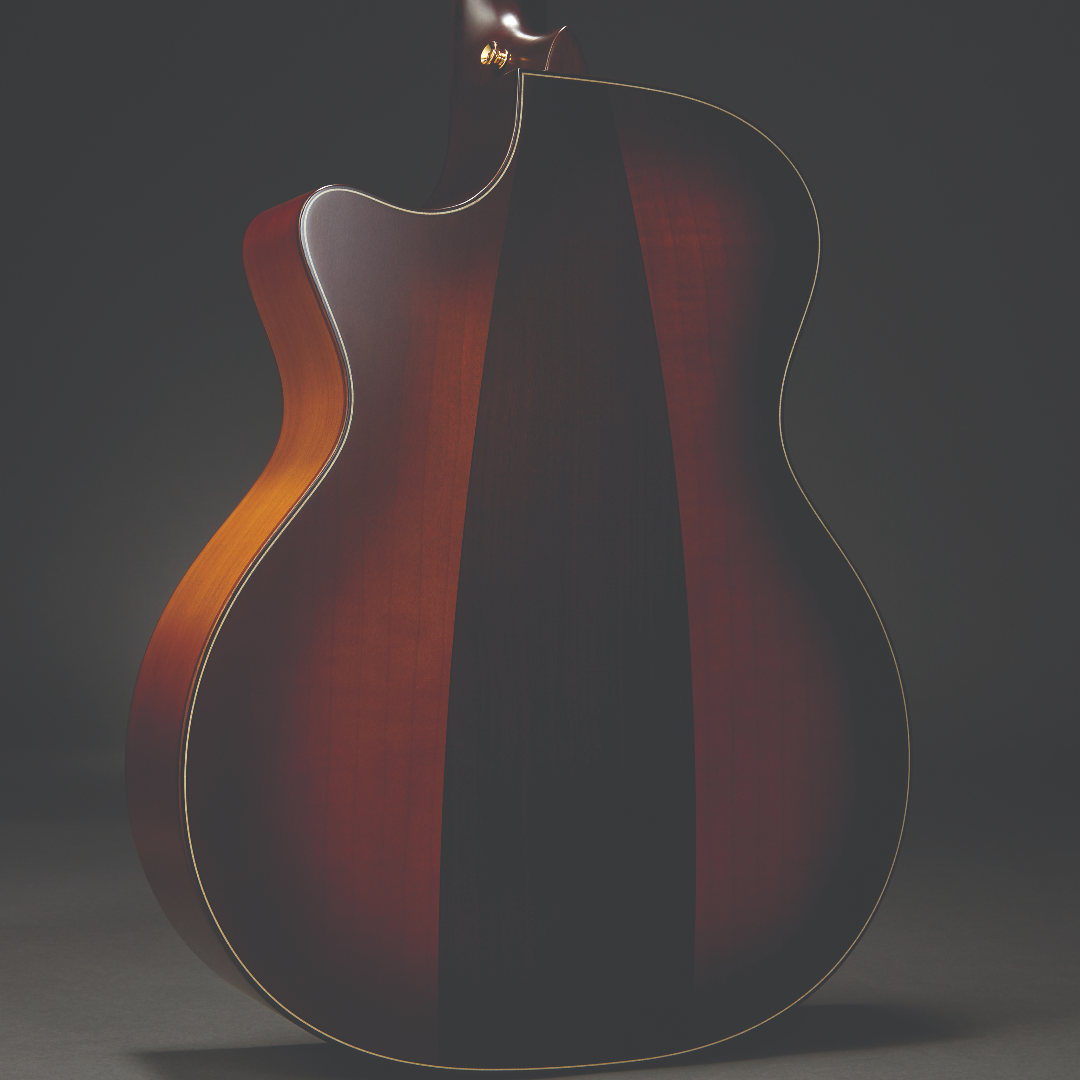
“We all need to embrace different tonewoods if we’re truly serious about sustainability,” Greene says. “Maple has great potential, but the problem that normally comes up is a manufacturer tries a different tonewood without changing the recipe. That’s like trying to make apple pie from tomatoes.
“We changed the recipe by coupling the brighter, dryer sound of maple with the warmer sound of European spruce for the top and making it more flexible via the skeletonized bracing. We also use our Kovar strings, which are less bright than traditional phosphor bronze.”
In Feb 2024’s Frets feature, Santa Cruz Guitars captain Richard Hoover expressed his deep appreciation of walnut and made the case for its versatility as a tonewood. Black walnut plays a major role in the Inception, as it’s used for the neck, fingerboard, bridge, bindings and large strip sandwiched between two pieces of maple on the back.
“Adding another warm wood with black walnut in the mix makes a significant contribution to the Inception Maple as well,” Greene explains. “Notice that the walnut strip in the back is not exactly like a D-35. On the Inception it’s widest right under the bridge, which is also walnut, so we’re trying to pick up as much of that walnut tone as possible right behind the bridge, where the most sound is produced on an acoustic guitar.”
Interestingly, black walnut is a rather light-colored wood with dark grains. On the Inception, it appears in several hues, ranging from the naturally light look of the bridge to the slightly stained fretboard with maple arrow inlays, to the rich grainy appearance of the neck and the dark stained back strip, which provides dramatic contrast to the Amber Fade Sunburst.
Hoover explained that even though it’s domestic, prime black walnut slabs large enough for guitar backs are quite scarce. Greene clarifies that smaller pieces, like the ones used on the Inception, are more readily available.
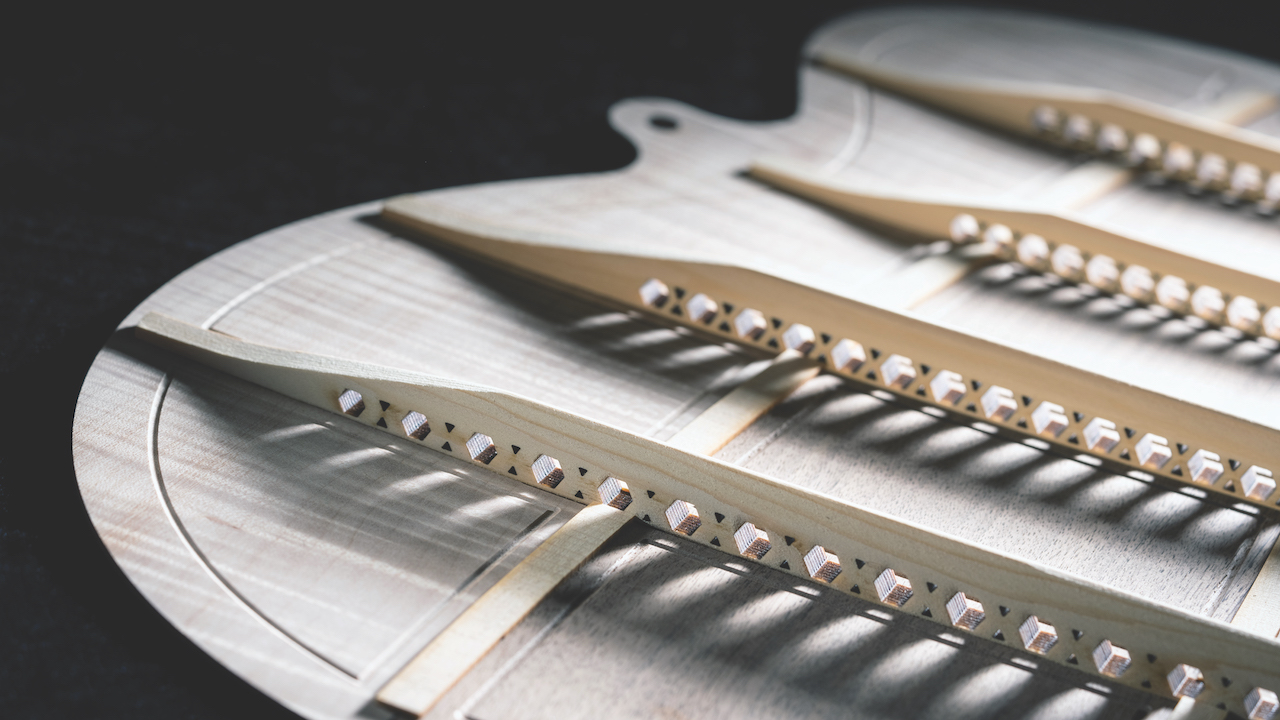
The Inception’s European spruce top features the same Amber Fade Sunburst, with a very light satin finish. It’s dusky, handsome and feels ready to hit the road, not a glossy trophy.
While maple has a reputation for a brisk, fundamentally focused sound, European spruce is known for having a snappy, yet warmer tone than Sitka spruce. It’s more akin to the Adirondack spruce Martin used historically before the resource ran dangerously low.
I can hear all the above wooden goodness contributing to the tone of the GPCE Inception Maple. There’s plenty of punch and projection and strong note separation, and overtones are not particularly rich or complex. The overall tone is still fundamental, with a rather dry finish, yet notes don’t die on the vine.
There is a great deal of resonance and enduring sustain. The sound, while not particularly balmy, boomy or boxy, is openly vivacious, with a midrange jangle and a top-end sparkle.
The Inception Maple’s inherent snappiness makes it very responsive to percussive playing, so even though a Grand Performance isn’t usually the first Martin body type a fingerstylist might seek out, this one is worth an audition for a modern percussive fingerstylist. And while it’s not a chunky strummer and therefore doesn’t offer the same troubadour support as a dreadnought, the Inception’s natural jangle can cut through a band mix like a Bowie knife. Ensemble artists will want to investigate.
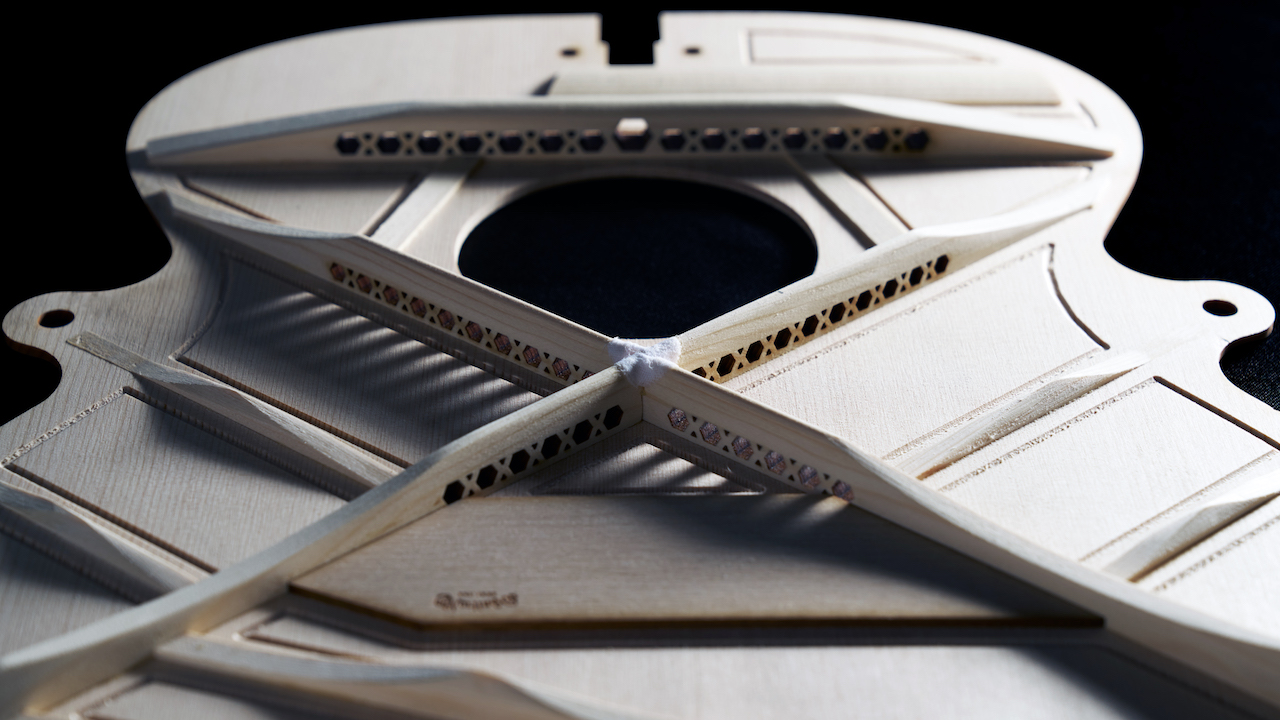
Plugged into an AER Tommy Emmanuel Signature amp, the Inception Maple sounded fabulous. The L.R. Baggs Anthem’s dual-source signal reproduced the instrument’s articulate tone with remarkable clarity, and an aggressive attack didn’t compromise the signal. Controls are tucked under the upper lip of the soundhole.
There’s a flywheel for volume and another to mix in the Tru Mic with the Element undersaddle piezo. I favored the blend right in the middle for the best balance between the lower boom energy of the pickup and the open brilliance of the mic.
A small caveat for most but significant to me is that one cannot easily add a magnetic pickup because the bracing dictates the Anthem be positioned smack dab in the middle of the soundhole.
The GPCE Inception Maple has a light feel under the fingers that matches its light finish and sprightly sound. The black walnut neck and fingerboard feels super smooth, and something about its high-performance neck taper made me wonder if the width at the nut was slightly narrower than its 1 ¾–inch specification.
Perhaps it’s the lack of a neck binding that added to my illusion, or maybe the Kovar strings. Martin introduced the nickel-cobalt alloy just last year, and it feels a bit smoother than phosphor bronze to these fingers.
Like all Grand Performance instruments, the Inception Maple is more a jack-of-all-trades than a master of one, but if there is one to focus on, it’s performance. This guitar can handle whatever you throw down on it, from melodic runs to complex chords in any style, from rock to country to jazz. Lead players will dig the articulation.
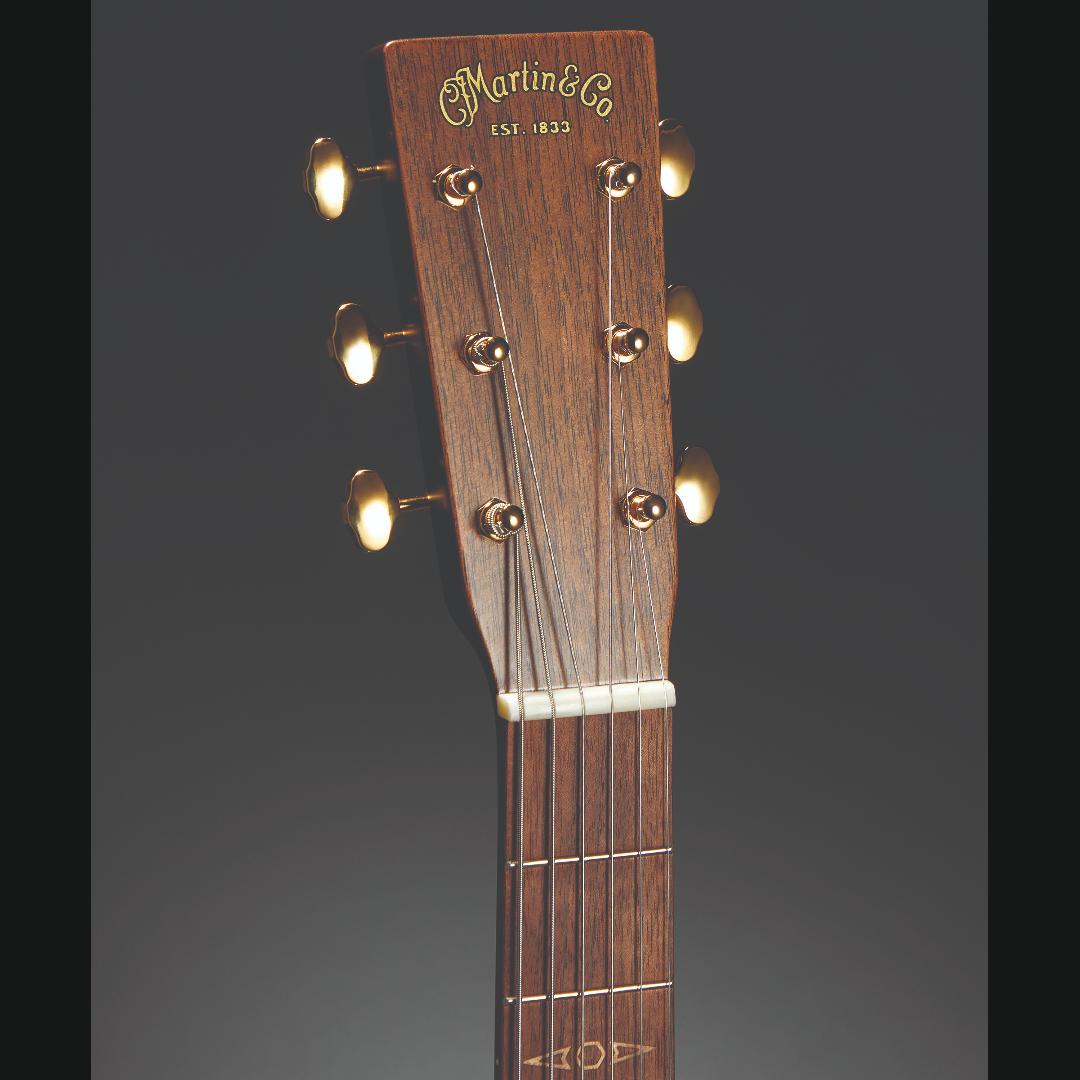
The GPCE Inception Maple represents a new pinnacle for Martin’s Grand Performance. It stands head and shoulders above the other models, which range from the affordable GPC-X2E on through a pair of Road Series vehicles and up to the American-made GPC-16E, which was formerly the top dog and is still only half the price of the Inception.
There’s a heck of a lot more going for it, from the dark and handsome appearance of the superior sustainable woods to the skeletonized bracing and significantly upgraded electronics.
Being that Martin didn’t have a souped-up Performance in the line, it makes sense that it chose this model as a focus for something on par with the many classic Martin models offered in this same price range. It also puts the company toe-to-toe with Taylor, Furch and others jockeying in the hi-fi acoustic-electric arena.
In my opinion, Martin has hit its design target and put forth a worthy challenger. Any player looking for such a flexible pro performance tool should take a good look and a listen. I’ll bet we see more models with unique wood combos and innovative bracing in the future.
For continuing its dedication to ingenuity and environmentalism via a very practical instrument, the Martin GPCE Inception Maple earns an Editors’ Pick Award.
Specifications
- NUT WIDTH 1 3/4”, white Tusq
- NECK Black walnut with high-performance taper
- FRETBOARD Black walnut, 25.4” scale, maple arrow inlays
- FRETS 20
- TUNERS Gold open-gear
- BODY FSC-certified solid European spruce top, maple sides, three-piece back of maple with black walnut. Skeletonized scalloped spruce bracing and sonic channels
- BRIDGE Black walnut with compensated white Tusq saddle
- ELECTRONICS L.R. Baggs Anthem
- FACTORY STRINGS Martin Kovar Light MK12
- WEIGHT 4 lbs (as tested)
- BUILT USA
For more information, visit Martin's website
Jimmy Leslie is the former editor of Gig magazine and has more than 20 years of experience writing stories and coordinating GP Presents events for Guitar Player including the past decade acting as Frets acoustic editor. He’s worked with myriad guitar greats spanning generations and styles including Carlos Santana, Jack White, Samantha Fish, Leo Kottke, Tommy Emmanuel, Kaki King and Julian Lage. Jimmy has a side hustle serving as soundtrack sensei at the cruising lifestyle publication Latitudes and Attitudes. See Leslie’s many Guitar Player- and Frets-related videos on his YouTube channel, dig his Allman Brothers tribute at allmondbrothers.com, and check out his acoustic/electric modern classic rock artistry at at spirithustler.com. Visit the hub of his many adventures at jimmyleslie.com

